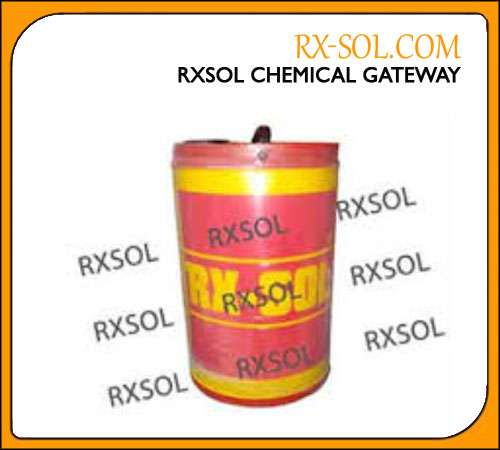Buffer Cleaner
Oman Chemical is leading one Largest Supplier, Manufacture a

Boiler Water treatment chemicals to control scale formation as well as restrict rusting process inside the boiler. Addition of New generation polymer in crease boiler water solid - mineral dissolving capacity which causes softeness of water while presence of phosphate, alkalinity directly control scale and corrosion in the boiler.
MULTIPLUS BWT is formulated to form a precipitate with calcium ions which will not adhere to metal surfaces but are in a form suitable for blowdown.
Used for boilers and water softening.
Formation of Calcium Sulfate is main cause for SCALE formation :::
The principal problem potential posed by sulfate ions in water is the possibility of calcium sulfate scale formation. Precipitation of calcium sulfate can occur when high concentrations of both calcium and sulfate exist simultaneously. There are three primary areas of water treatment in which calcium sulfate precipitation may occur boilers, cooling systems, and ion exchangers operating in the hydrogen or acid mode.
In boilers, calcium sulfate scale formation has been reduced to a minimum by modern treatment practices. The low hardness levels largely preclude calcium sulfate boiler scale. By contrast, cooling systems are subject to calcium sulfate scale deposition because the makeup is usually not treated for hardness removal. Cooling water is usually treated with sulfuric acid for pH control, and the makeup is cycled, i.e. concentrated. Calcium sulfate scale deposition can result unless the cycles of concentration are properly controlled in conjunction with the proper use of scale control chemicals. Cation ion exchangers regenerated with sulfuric acid also can pose a major calcium sulfate problem. Calcium sulfate precipitation can be avoided by controlling the acid concentration and the flow rate through the exchanger.
Sulfate content can be calculated in Laboratory by using this method ::: http://rxmarine.com/SULFATE-TEST-KIT
For optimum results dose MULTIPLUS BWT direct to the boiler via the bypass pot-feeder. It should be dissolved in hot water (50°C) at a ratio of 1 part Liquid to twenty parts condensate (e.g. 500 mL/10 litres). Ensure that treatment is fully dissolved before dosing.
This treatment dosed at 1.49 grams per ton of distilled water provides 1.0 ppm phosphate.
Feed Points: Dose with other BOILER CHEMICAL/alkaline liquid by diluting withcondensate and feed directly into the system drum (below the water level) using a bypass pot feeder. For low-pressure boilers, It may be dosed to the hotwell or condensate return tank, although this is not the preferred method.
Dosage and control
|
Phophate test result in pPM PO4 |
|||||||
|
Pressure |
0 - 10 |
10 - 20 |
20 - 30 |
30 - 40 |
40 - 50 |
> 50 |
Control range |
|
0-40 Bar |
23 |
11.5 |
Satisfactory |
Satisfactory |
Blow Down |
20-50 |
|
|
41-60 Bar |
17 |
5.5 |
Satisfactory |
Blow Down |
Blow Down |
15-30 |
|
|
> 60 Bar |
5.5 |
Satisfactory |
Satisfactory |
Blow Down |
Blow Down |
10-25 |
|
Select row on righthand side for applicable pressure range. Compare test result with comment in table and dose stated amount of product per ton boiler water volume.
These are recommended values based on experience and are in no way intended to replace the boiler manufacturer's specifications or company regulations.
RXSOL MULTIPLUS BWT is multi-functional boiler water Treatment formulated to be used in conjunction with RXSOL OXYTREAT to provide a complete steam boiler with low hardness feed-water.
Packing : 20 Ltrs
Benefit and Features
RXSOL brand is well known name for MULTIPLUS BWT manufacturer, Exporter and supplier in Mumbai, Chennai, Kolkata, Vizag, Goa, Kochin, Manglore, Kandla, Gandhidham, Fujairah, Dubai, Sharjah, Uae, Gulf Middle East
Sampling And Testing
A sample of boiler water should be drawn for analysis daily. The sample should always be taken from the same point after blow down, cooled and tested immediately. Fill the Boiler Water Log Form according to result. It is important that regular testing is carried out to ensure levels of treatment are correct.
Physical Properties :
Appearance :Liquid
Corrosive action :None
pH 1% solution :8.8
Flash point :None
Phosphate/pH relationship recommended to control boiler corrosion. Different forms of phosphate consume or add caustic as the phosphate shifts to the proper form. For example, addition of monosodium phosphate consumes caustic as it reacts with caustic to form disodium phosphate in the boiler water according to the following reaction:
| NaH2PO4 | + | NaOH | -> | Na2HPO4 | + | H2O |
| monosodium phosphate | sodium hydroxide | disodium phosphate | water |
Conversely, addition of trisodium phosphate adds caustic, increasing boiler water pH:
| Na3PO4 | + | H2O | -> | Na2HPO4 | + | NaOH |
| trisodium phosphate | water | disodium phosphate |
sodium hydroxide |
RXSOL is the largest MULTIPLUS BWT manufacturer and supplier in Nairobi, Kenya, Uganda, Mumbai, Muscat Barka Oman, Fujairah, Abudhabi, Ajman, Sharjah, Dubai, Canada, Gujrat Gandhidham Surat, Kolkata Haldia, Chennai Ennore, Vizag Visakhapatnam Andhra Pradesh...